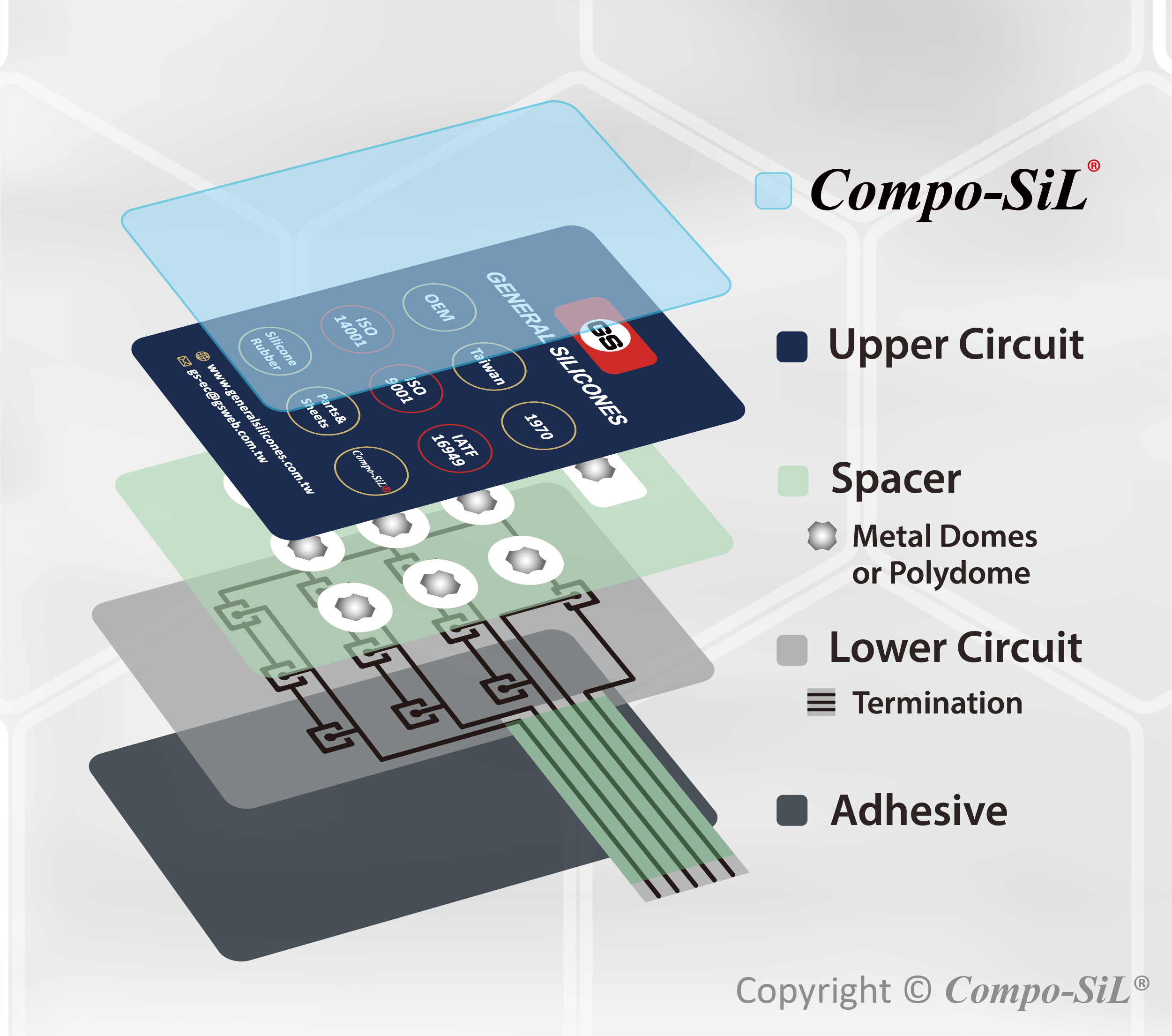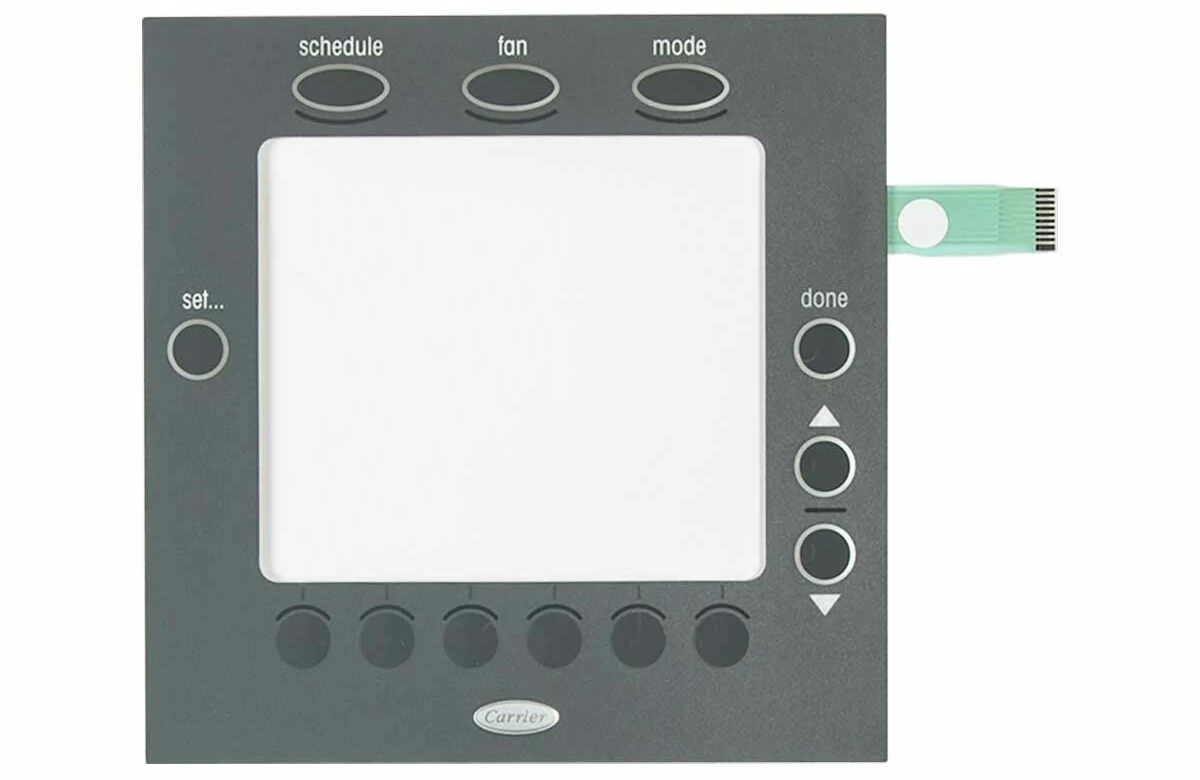Understanding the Relevance of Membrane Switches in Interface
Membrane switches are important parts in the layout of effective user interfaces, helping with not just capability yet also enhancing aesthetic charm and individual communication. As we discover the future trends and various advantages associated with Membrane technology, it becomes clear that these switches are much more than just components; they represent a convergence of development and practicality.
What Are Membrane Switches?

The spacer layer, which has sticky residential properties, enables the separation of the circuit layer from the overlay, ensuring that the button stays in a non-activated state until pushed. When pressure is put on the overlay, it presses the spacer layer, connecting the gap and finishing the circuit in the underlying layer. This design not only decreases the physical room needed for standard mechanical switches yet also boosts the longevity of the tool, as Membrane switches are usually resistant to dirt, moisture, and various other ecological factors.
Commonly found in applications ranging from customer electronics to medical devices, Membrane switches are indispensable to modern innovation, providing a effective and straightforward interface that straightens with contemporary design demands.
Advantages of Membrane Switches
While countless button technologies exist, Membrane Switches deal unique advantages that make them especially desirable in numerous applications. One of the main advantages of Membrane switches is their portable style, which allows for space-saving implementations in gadgets where real estate is limited. Their slim profile not just boosts aesthetic appeal but also assists in lightweight building and construction.
Another considerable advantage is their resistance to ecological factors. Membrane switches are usually sealed against dampness, dust, and contaminants, making them optimal for use in demanding environments, such as clinical gadgets and industrial equipment. This longevity extends the lifespan of the button, minimizing maintenance expenses and enhancing dependability.
Additionally, Membrane switches can be customized to satisfy details layout requirements, including distinct graphics and shades that enhance user communication. Their tactile feedback options can additionally be tailored to supply a gratifying individual experience. In addition, Membrane buttons are affordable, especially in high-volume applications, as they can be produced successfully.
Applications in Different Industries

In the consumer electronics sector, Membrane switches prevail in tools such as microwaves, cleaning machines, and push-button controls. Their responsive responses and aesthetic alternatives enhance individual experience while offering a sleek, contemporary look. Additionally, automobile producers make use of Membrane switches in control panel controls and infomercial systems, where space is limited, and customer interaction is vital.
Furthermore, the commercial industry leverages Membrane buttons in control panels for equipment and devices, enabling intuitive his explanation procedure in frequently severe environments. Their resistance to chemicals and dampness guarantees longevity and integrity in these applications. In general, the flexibility of Membrane Switches contributes dramatically to their prevalent usage, making them vital in different technological domains.
Style Factors To Consider for Membrane Switches

When designing Membrane switches, a number of crucial factors to consider should be taken into consideration to ensure optimum capability and customer experience. First of all, the selection of materials is critical; selecting sturdy, premium substrates can boost the switch's longevity and resistance to environmental factors such as moisture and temperature level changes.
Secondly, the style of the visuals overlay ought to focus on quality and ease of usage. Icons and message need to be legible, and the design should assist in instinctive communication (membrane switches). Furthermore, responsive responses is necessary; including a tactile dome or various other devices can improve the customer experience by supplying physical confirmation of activation
An additional essential element is the button's electrical performance. Designers should make sure that the conductive traces are appropriately designed to decrease resistance and prevent signal disturbance. This entails examining the called for actuation pressure and making sure compatibility with the digital elements they will certainly interface with.

Future Fads in Membrane Technology
As innovation proceeds to advance, Membrane switches are positioned to evolve considerably, driven by advancements in materials and manufacturing techniques. One arising fad is the incorporation of sophisticated products, such as flexible substrates and conductive inks, which improve toughness and minimize the overall weight of Membrane switches. These materials not just enhance the responsive action however additionally permit for the layout of buttons that can hold up against harsher environmental problems.
Additionally, the combination of touch-sensitive technologies is changing typical Membrane Switches into more interactive customer interfaces. Capacitive touch sensing units installed within Membrane button panels can offer an extra instinctive and receptive individual experience, lining up with the expanding demand for smooth, modern-day designs in customer electronic devices.
Additionally, innovations in printing techniques, such as digital and 3D printing, enable quick prototyping and personalization of Membrane buttons. This adaptability allows producers to respond quicker to market demands and consumer choices.
Last but not least, sustainability is ending up being a significant emphasis, with manufacturers checking out green products and procedures. As these fads unravel, the future of Membrane modern technology promises improved capability, visual charm, and ecological duty, strengthening their role in innovative interface across different industries.
Final Thought
In verdict, more tips here Membrane Switches represent an essential component in the style of customer interfaces, incorporating functionality with visual adaptability. As continue reading this developments in modern technology continue, the development of Membrane switches is expected to further fine-tune user interfaces, driving development and boosting usability in a significantly complex technological landscape.
Membrane buttons are essential components in the style of effective customer interfaces, assisting in not only performance yet likewise boosting visual charm and customer communication.Membrane Switches offer as a vital component in different individual interfaces, promoting a seamless interaction between individuals and electronic tools.While various switch technologies exist, Membrane Switches offer distinctive advantages that make them specifically desirable in numerous applications.Additionally, Membrane switches can be customized to meet certain style needs, including one-of-a-kind graphics and shades that boost individual interaction.In verdict, Membrane Switches stand for a crucial component in the layout of individual interfaces, combining capability with visual versatility.
Comments on “Membrane Switches: A Cost-Effective Solution for Product Interfaces”